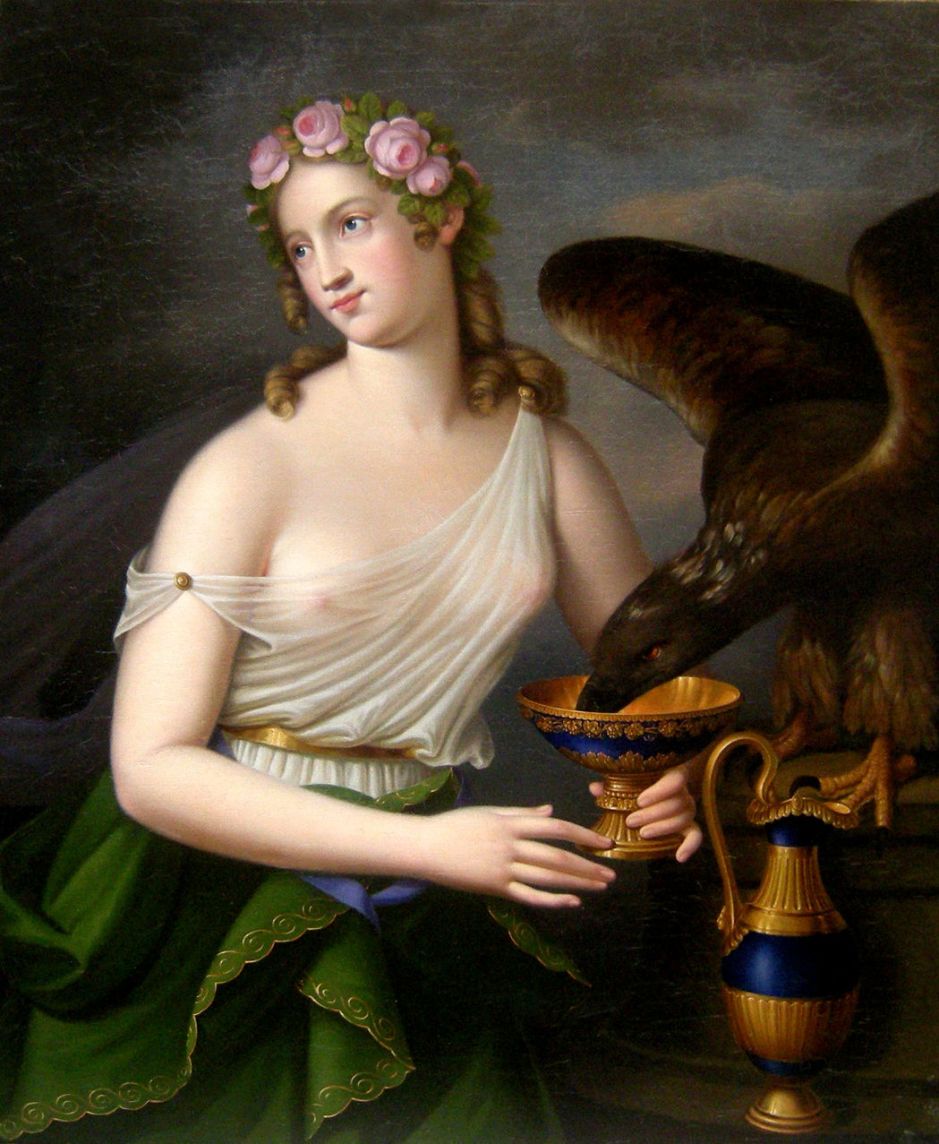It’s perhaps reassuring to know that Zeus and Hera had children of their own, in addition to those of Zeus’s many rapes, seductions and affairs. Hebe (Greek ἥβη), known to the Romans as Iuventas (Juventas) is their youngest daughter, and the goddess of youth, in the sense of young adulthood, what we might consider to be the prime of life. Until she was later married to the hero Heracles (Hercules), as the youngest of the deities of Olympus, she served as their cupbearer, bringing them ambrosia and nectar to promote their youth and immortality.
She is almost always seen in paintings in her role as cupbearer, with Zeus as an eagle, and became a favourite guise for portraits of beautiful young women. After all, what could possibly be more flattering to them when in the prime of life than to be shown as Hebe?

Jacob Jordaens’ Hebe from 1655 is an early and purely mythological representation of the goddess. She is seen holding an exaggerated cup for Zeus as an eagle to drink from. Oddly, she is surrounded by evil beasts, including oversized rats and a serpent with fangs who appear to be guarding the spring on the left. This could refer to the black water from the source of the rivers Styx and Cocytus in Psyche’s third task, perhaps.

Jean-Marc Nattier’s portrait of the Duchesse de Chartres (1726-1759) as Hebe, which he painted in 1744, is one of three portraits of nobility and royalty whom he placed in the role of Hebe. This shows Louise Henriette de Bourbon, who was later to become Duchesse d’Orléans. With her are the familiar cup and Zeus as an eagle.

Élisabeth Louise Vigée Le Brun’s Portrait of Anna Pitt as Hebe (1792) shows the sixteen-year-old daughter of the British politician Thomas Pitt, who was an art connoisseur and collector. She too holds a jug and cup with which to feed Zeus’ eagle, although her gaze is rather distracted. This may have been the result of the artist using a real eagle, borrowed from a Cardinal, who apparently wasn’t happy to be confined indoors during the sitting.

By the nineteenth century, these portraits appear to have fallen from fashion, and Hebe reappears as a mythological subject in her own right, for example in Gustav-Adolphe Diez’s Hebe with Jupiter in the Guise of an Eagle from 1826. As the model is no longer noble, she appears nude, feeding the standard eagle.

Louis Fischer’s Goddess of Youth and Cupbearer Hebe and Eagle of Zeus was painted the following year (1827), and is more restrained with its use of diaphanous fabric.

Although I don’t have a date for Carolus-Duran’s painting of Hebe, I suspect it would have been completed well into the latter half of the nineteenth century, making it one of the last depictions of the goddess. The artist shows her almost wing-walking on a huge eagle, while pouring wine into a cup held in her left hand.
Hebe was the victim of a moralising campaign by the Church of England in the sixteenth century. A note was inserted into a Latin-English dictionary referring to a myth in which Hebe, while attending to the gods in her role of cupbearer, fell from Olympus. This caused her robes to become undone, fall from her body, and expose her naked body to view – something the church held as shameful. Whatever temporary effect this may have had, it doesn’t seem to have worried painters in the long run.

